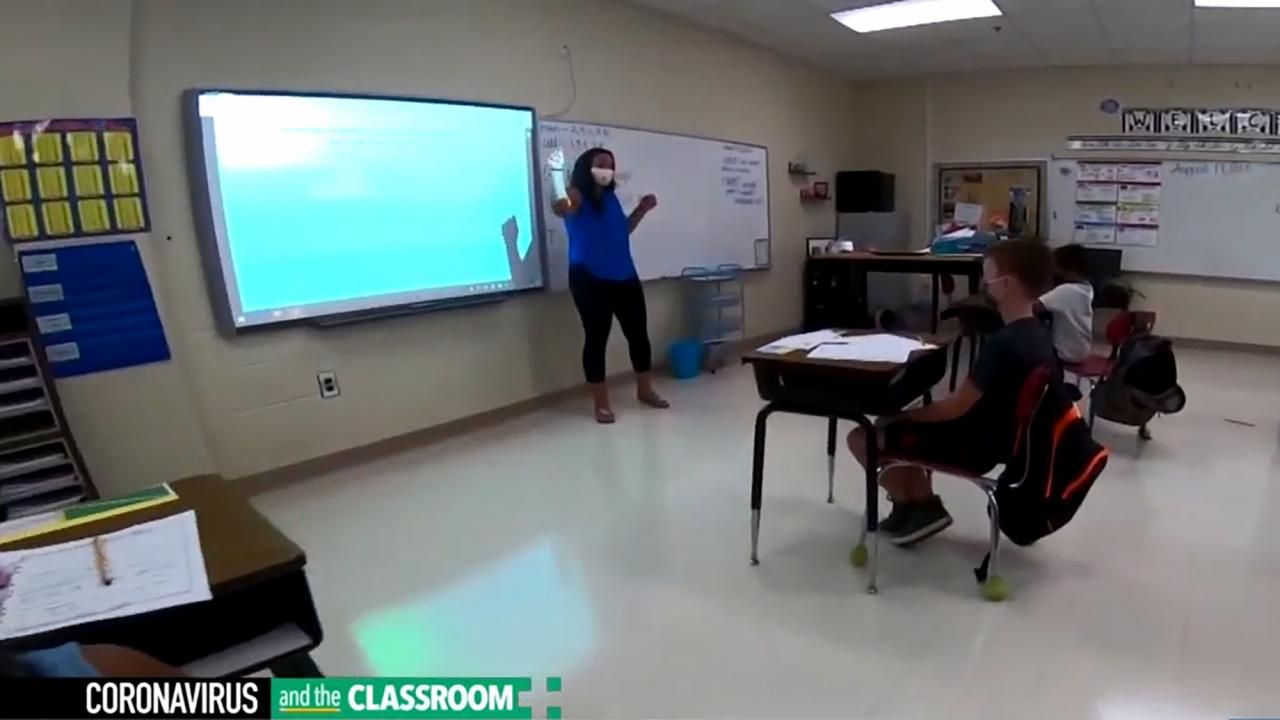State Board of Education to vote on new passing scores for reading, science tests

Most of North Carolina’s third- through eighth-grade students wouldn’t have passed their end-of-grade reading exams from this spring under “cut scores” being considered by the North Carolina State Board of Education.
The board is reviewing state Department of Public Instruction-recommended proficiency level scores for the newest versions of the reading exams and the NCEXTEND1 science exam. The exams were revised after the board approved new content standards in those subjects in 2017, and they were administered for the first time this spring.
The “cut scores,” or benchmarks for different levels of achievement, have been recommended by a panel of 86 educators, state staff and teams at North Carolina State University and the University of North Carolina at Greensboro.
Under the proposed score standards, just more than half of students would have passed their NCEXTEND1 science tests, but less than half would have passed either reading exam.
NCEXTEND1 is an alternate assessment used for students with disabilities.
Board members will receive the results of end-of-course and end-of-grade exams at their meeting in September, and the new proposed cut scores would allow officials to grade the final tests by then.
The board will vote Thursday on the scores.
Maureen Stover, 2020 state Teacher of the Year and a biology teacher, said parents and students should not take the test results too seriously and urged the department to communicate to them that tests don’t determine lifetime education outcomes.
“This is one test taken on one day, and that does not dictate whether or not they are really ready to go to college,” Stover said.
DPI Director of Accountability Services Tammy Howard said establishing which scores indicate college or career readiness is federally required and that the state is required to communicate what those scores are to parents.
But Howard said communicating that the tests aren’t a definitive determination of career or college readiness is always a topic of board and DPI staff conversation. She noted that the department is also trying to develop “innovative” assessments and new student reports.
Students’ overall test performance for the 2020-21 school year is expected to be lower than normal, after an entire school year disrupted by COVID-19 pandemic protocols that pushed the state’s 1.5 million schoolchildren to remote-only learning, staggered or altered in-person learning and classrooms led by teachers instructing both virtual and in-person students.
Because the reading and science cut scores are for new tests, a direct comparison to prior year test results isn’t apples-to-apples and can’t be made to discern “learning lost” related to the pandemic.
The last year of test results available for reading and science scores at those grade levels is for the 2018-19 school year.
That year, for English language arts, third- through eighth-grade students testing “not proficient” hovered above 40% for most grades, in both the general test and the NCEXTEND1 test.
For science, NCEXTEND1 results available for fifth and eighth grades showed more than 60% of students passed.
Under the proposed cut scores, grade level “not proficient” scores ranged from 55.9% to 64% on the NCEXTEND1 test and from 51.7% to 57.6% on the end-of-grade exam.
Just less than 60% of students in each fifth grade, eighth grade and biology would have passed the new NCEXTEND1 science exam.
Also on Wednesday, DPI officials explained how they intend to handle and present annual Educator Value-Added Assessment System (EVAAS) data. The data are used to measure the impact a teacher had on students’ academic performance by comparing those students’ performance to DPI’s algorithmically projected performance for them, which is based on past performance.
State education officials will use a “gap year” analysis approach to evaluating teacher performance, DPI Educator Recruit and Support Director Thomas Tomberlin said.
That means DPI officials will pretend like the 2019-20 school year didn’t happen, because the pandemic canceled the end-of-year tests, he said. Instead, DPI will consider changes in student performance between the 2018-19 and 2020-21 school years.
Tomberlin noted that changes in performance will reflect multiple teachers, including the one who taught during the “gap year.” As a result, he said, officials will look at whether students who had the same teacher during that gap year had similar changes in performance the next year.
DPI will not release teacher-level EVAAS results but will allow local school boards to decide whether to do so.
“These measures are valid, but we know there will be anxiety, confusion, questions,” Tomberlin said.
Tomberlin added he hopes schools will not use the EVAAS results to make high stakes employment decisions.









